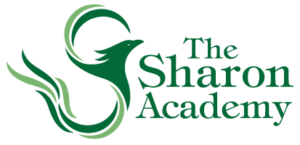Year B
Quick Links: |
The middle school cycles through a two-year curriculum, Year A and Year B. We believe that “less is more” and have limited our studies to six units throughout the two years. Both years of the curriculum also include projects that lie outside of our integrated units, for example, the writing of poetry and/or short stories within the Language Arts curriculum, our annual Science Fair, and our annual Circus.
Year B’s curriculum examines the themes of identity, responsibility, and action from three content areas: Living in Vermont, This I Believe, and Immigration.
Living in Vermont
The first theme, Living in Vermont, asks students to reflect on how Vermont’s cultural traditions, physical landscape, climate, and biome help to shape who they are as individuals. In Social Studies, students use primary sources to investigate Vermont’s history and culture, with particular attention paid to the indigenous peoples of this region. Students learn how to analyze maps, photos, and census data in order to make logical deductions about the past. They also practice making their own maps and reflecting on how Vermont culture compares to other regions
through multi-media exchanges with students in other parts of the world.
In Science, students spend a great deal of time outside learning ecology and biodiversity through a local lens. Students collect and study the Rusty Crayfish, an invasive species in the White River; do a biodiversity inventory of the local forest; learn to identify native trees and examine how their adaptations make them uniquely adapted to our climate; and analyze data about local bobcat, deer and hare populations to draw conclusions about food webs. Students apply their map and compass skills from Social Studies on an orienteering course focused on tree identification.
In Language Arts, we read literature that stimulates discussion about setting and identity, such as Return to Sender, by Julia Alvarez. In Art, students study the artist Andy Goldsworthy and create art from the Vermont landscape using natural materials. The whole school takes a day to climb Mount Cardigan to hone their map and compass skills, look at the ecology of the mountaintop and practice landscape artwork.
This I Believe
The second theme of the year asks students to consider their identity through the lens of World Beliefs. Students ask themselves how science, religion, and family values shape who they are and what they believe.
The Social Studies curriculum focuses on major world religions and the traditions and cultures that have arisen from these religions. After learning how Judaism, Christianity, and Islam address the philosophical questions of “What happens after death?” and “How should I live my life?,” students have a chance to research a world religion of their choosing. Over the course of a month, they hone their research and writing skills, culminating in a final oral presentation to teach others about their chosen religion.
In Language Arts, book selections include Refugee by Alan Gratz, the story of three refugees whose lives overlap and intertwine, and Night by Elie Wiesel, the story of the author’s experience in a concentration camp. Students write a personal essay entitled “This I Believe,” outlining a personal belief or ideal. As a counterpoint to the study of religion, Science class examines how scientific theories develop from a body of evidence and are subject to change.
Immigration
Students explore the basic properties of matter, and study basic chemistry to look at life and the origin of the universe through a scientific lens.We end the year examining the question “Who Am I?” through the theme of Origins.
In Social Studies students study immigration and refugee issues. Students analyze political cartoons to understand historical immigration trends and research current controversies about undocumented immigrants and refugees. Using their understanding of U.S. and international policies, students work in teams to present thoughtful, well-researched arguments in our end-of-year debates.
